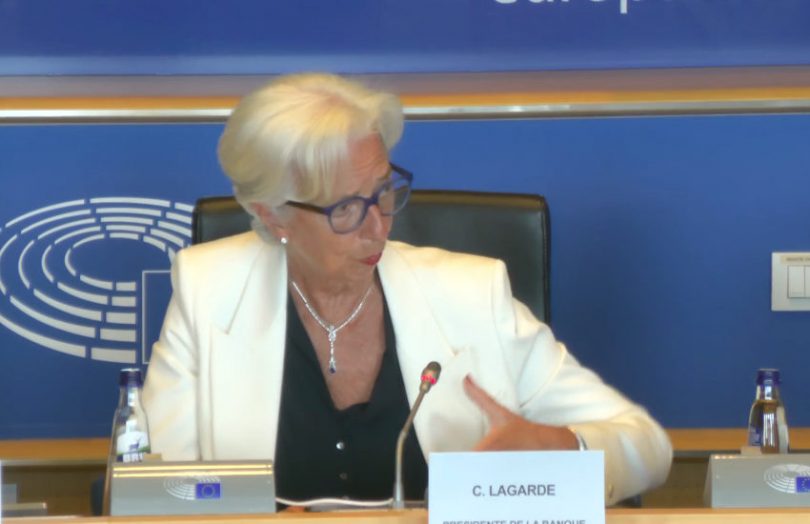On Monday, Christine Lagarde addressed the European Parliament, saying that the EU’s cryptocurrency legislation, Markets in Crypto-assets (MiCA), needs to go further. She outlined proposals for how it could be extended.
In addition to being the President of the European Central Bank, she also heads the European Systemic Risk Board (ESRB), which this week discusses the financial stability risks of crypto-assets.
In response to a question by EU member of parliament Aurore Lalucq, Lagarde told the Committee on Economic and Monetary Affairs that “Crypto assets and decentralized finance have the potential to pose real risks to financial stability.”
However, she stated that there are currently limited links between traditional finance, the broader economy and the crypto-asset sector. But the ESRB will raise alarm bells if the interconnected risk becomes significant.
MiCA 2
While the European Parliament has passed the MiCA legislation, it is still going through the EU’s trilogue process between Parliament, the European Council and the European Commission.
“To my understanding (MiCA) will not be implemented until 2024, which is a long way away when you think of the speed at which market values and the creativity and greed actually impact those developments,” said Lagarde.
The ESRB has started exploring how legislators might consider extending MiCA. She outlined the four potential areas of focus for MiCA 2.
MiCA 2 should:
- address the risks of interconnectedness with traditional financial institutions
- regulate cryptocurrency staking and lending
- address the regulation of decentralized finance where there are no intermediaries
- regulate the issuance of crypto-assets where there is no identifiable issuer such as Bitcoin.
“Bitcoins will not be covered by MiCA 1, but hopefully (for) MiCA 2, you will take that into account,” said Lagarde.
Meanwhile, the other major piece of EU blockchain legislation for the DLT pilot regime for tokenized securities has been enacted and comes into force in March 2023.






